Introduction
Golden cicadas, scientifically known as Cryptotympana atrata, are not merely insects—they are a culinary delicacy in many cultures, celebrated for their unique texture and earthy flavor. Often harvested during their brief emergence period, these creatures are prized for their high protein content and sustainable sourcing. However, for those who prefer to stock up or enjoy them year-round, freezing is a practical preservation method. This article delves into the nuances of transforming frozen golden cicadas into a delectable dish, ensuring safety, flavor, and cultural appreciation are woven into every step.
Understanding Golden Cicadas: A Brief Overview
Before diving into recipes, it’s essential to grasp why golden cicadas are esteemed in gastronomy. Revered in regions like Southeast Asia, China, and parts of the Americas, they are harvested post-molting, when their exoskeletons are tender and their flavor mild. Nutritionally, they boast 72% protein by dry weight, rich in amino acids, vitamins, and minerals like zinc and iron. Their low fat and carbohydrate profile also aligns with modern health trends. Yet, their true allure lies in their umami-rich taste, often described as a cross between shrimp and almonds.
Thawing and Safety: The Foundation of Preparation
Proper thawing is critical to preserve texture and prevent bacterial growth. Begin by transferring frozen cicadas from the freezer to the refrigerator. Allow 12–24 hours for gradual thawing in a sealed container to avoid cross-contamination. Avoid microwave thawing, as it can partially cook the exoskeleton, leading to uneven texture. Once thawed, pat them dry with paper towels to remove excess moisture—this step is pivotal for achieving crispiness during cooking.
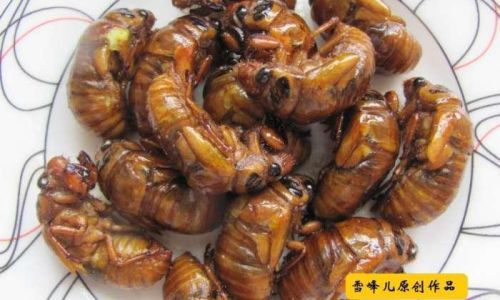
Cleaning and Pre-Cooking Preparations
Even if purchased pre-cleaned, a rinsing step ensures hygiene. Submerge cicadas in cold water, gently agitating to dislodge debris. For those harvested wild, use a soft brush to clean crevices. Some chefs opt to remove wings and legs for a neater presentation, though this is optional. Parboiling is a traditional technique to eliminate impurities: simmer cicadas in salted water with a bay leaf for 5 minutes, then drain and shock in ice water. This process also firms the flesh, preventing sogginess during frying.
Cooking Methods: Exploring Techniques and Flavors
-
Pan-Frying with a Crispy Glaze
- Ingredients: 200g thawed cicadas, 2 tbsp olive oil, 1 tbsp soy sauce, 1 tsp honey, 1 garlic clove (minced), black pepper.
- Method: Heat oil in a skillet. Sauté garlic until fragrant. Add cicadas, stirring frequently. Drizzle soy sauce and honey, tossing to coat. Fry for 8–10 minutes until golden. Serve with a squeeze of lime.
- Tip: For added crunch, dust with cornstarch before frying.
-
Oven-Roasted with Herbs
- Ingredients: 300g cicadas, 1 tbsp rosemary, 1 tsp thyme, 1 tbsp melted butter, salt.
- Method: Preheat oven to 200°C (400°F). Toss cicadas with butter and herbs. Spread on a baking sheet. Roast for 15–20 minutes, flipping halfway. The result: intensely aromatic, herb-crusted morsels.
-
Stir-Fried with Vegetables
- Ingredients: 150g cicadas, 1 bell pepper (diced), 1 onion (sliced), 2 tbsp oyster sauce, 1 tsp ginger.
- Method: Stir-fry vegetables in sesame oil until tender. Add cicadas and oyster sauce. Toss for 5 minutes. Garnish with chopped cilantro.
-
Deep-Fried as a Bar Snack
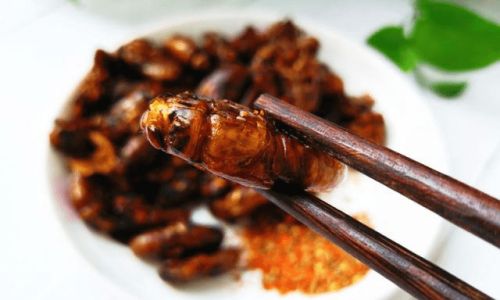
- Ingredients: 250g cicadas, 1 cup tempura batter mix, chili flakes.
- Method: Dip cicadas in batter. Fry in hot oil (180°C) for 3–4 minutes until crisp. Drain on paper towels. Serve with a spicy aioli.
Seasoning and Flavor Pairings
Golden cicadas’ mild flavor acts as a canvas for bold seasonings. Smoked paprika, cumin, or five-spice powder can elevate their profile. For a fusion twist, marinate in teriyaki sauce or toss with lime zest and chili. Sweet-savory combinations, like honey-sriracha glaze, also work wonders. Experiment with textures by pairing with toasted nuts or pomegranate seeds for contrast.
Serving Suggestions and Cultural Context
In traditional settings, cicadas are often enjoyed as appetizers or paired with rice dishes. Modern interpretations see them atop salads or tucked into tacos. When hosting, present them on a slate board with dipping sauces, encouraging guests to appreciate their crunch. Always respect cultural practices—in some regions, cicadas are consumed during specific festivals as symbols of renewal.
Health Considerations and Allergies
While nutritious, cicadas may trigger shellfish allergies due to shared proteins. Advise guests with crustacean sensitivities to exercise caution. Additionally, source cicadas from reputable suppliers to avoid pesticide exposure.
Conclusion: A Sustainable Delicacy
Cooking frozen golden cicadas transcends mere sustenance—it’s a nod to culinary heritage and environmental stewardship. By mastering thawing, cleaning, and cooking techniques, you unlock a protein-packed ingredient that delights the palate and sparks conversation. Whether fried, roasted, or stir-fried, these insects offer a gateway to exploring unconventional yet delicious foods. So, embrace the adventure, savor the crunch, and let your kitchen become a stage for this ancient delicacy.
Final Tip: For adventurous eaters, experiment with cicada flour in baked goods or protein bars—a testament to their versatility. Remember, the key to culinary success lies in balancing respect for tradition with creative innovation.
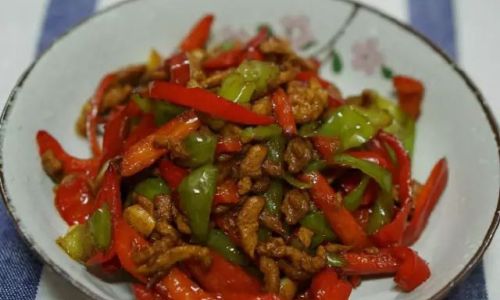
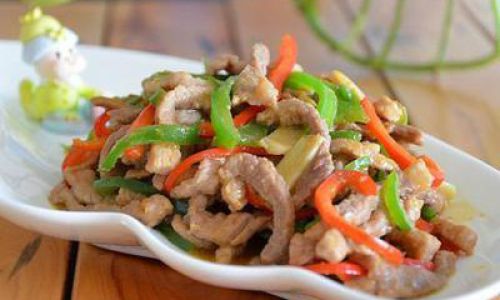
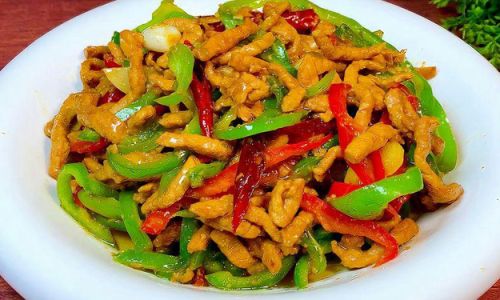
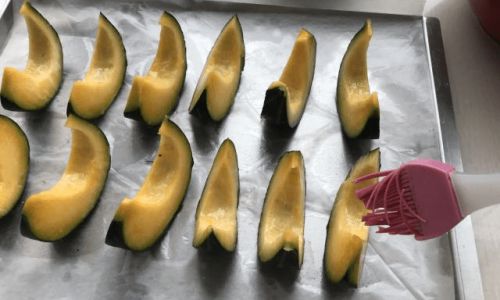
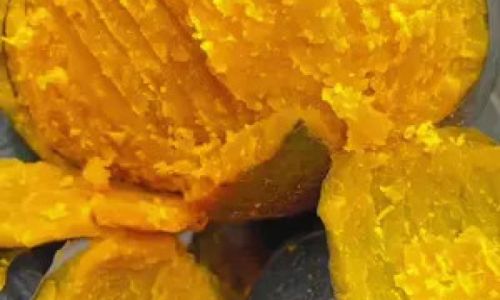
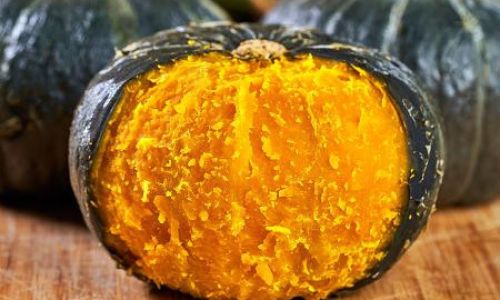
0 comments